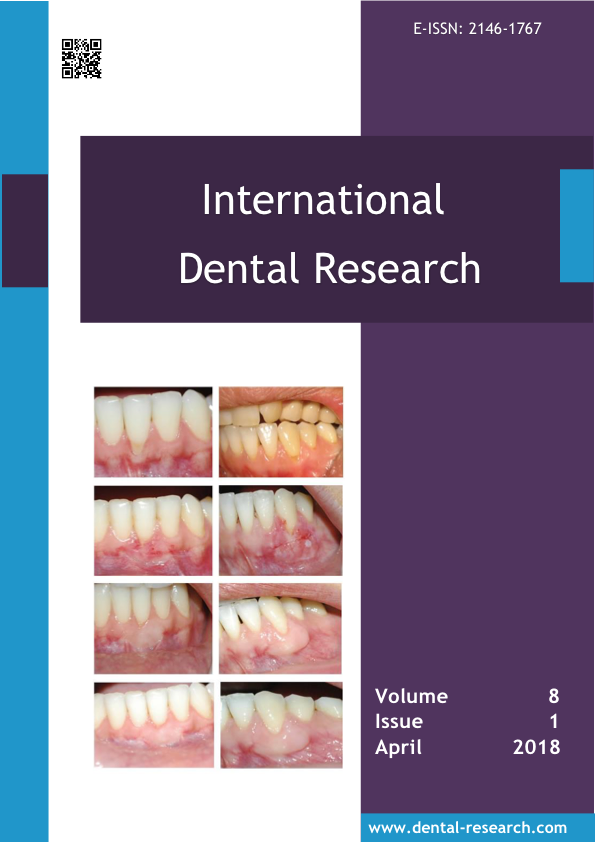Cleidocranial dysplasia. A molecular and clinical review
Abstract
Cleidocranial dysplasia (CCD) is a rare autosomal dominant disorder characterized by skeletal and dental abnormalities primarily, short stature, aplasia or hypoplasia of clavicles, open fontanelles and supernumerary teeth. Heterozygous mutations of the runt related transcription factor 2 (RUNX2) gene have been found in approximately 60-70% of cases leaving a large number of cases with no defined genetic cause which led us to delve into molecular mechanisms underlying CCD and thus to detect potential target genes to be explored in these patients. In this review we also highlight very broadly the phenotypic characteristics of previously reported patients with CCD.
How to cite this article: Avendaño A, Cammarata-Scalisi F, Rizal MF, Budiardjo SB, Suharsini M, Fauziah E, Grande NM, Fortunato L, Plotino G, Yavuz I, Callea M. Cleidocranial dysplasia. A molecular and clinical review. Int Dent Res 2018;8(1):35-38.
Linguistic Revision: The English in this manuscript has been checked by at least two professional editors, both native speakers of English.
Full text article
Authors
This is an Open Access article distributed under the terms of the Creative Commons Attribution 4.0 International License (CC BY 4.0), which permits unrestricted use, distribution, and reproduction in any medium, provided the original work is properly cited.

